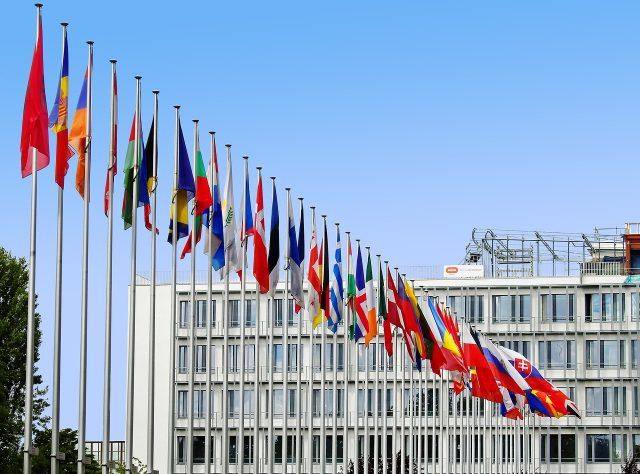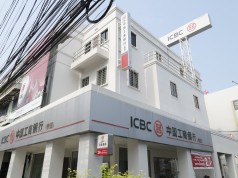IMF World Economic Outlook 2023: Global GDP to Grow +3% in 2023 & 2024, United States +1.8% in 2023 & +1% in 2024, China +5.2% in 2023 & +4.5% in 2024, Potential Risks from Ukraine War, Extreme Weather Events, Financial Sector Risks with Higher Interest Rates, China Real Estate Problems & Distressed Sovereign Wealth Debt
4th August 2023 | Hong Kong
The International Monetary Fund (IMF) has released the IMF World Economic Outlook 2023 (July Update), with global GDP growth projected at +3% in 2023 and +3% in 2024. The IMF World Economic Outlook 2023 titled “Near-Term Resilience, Persistent Challenges”, highlighted early 2023 crisis contained (United States debt ceiling standoff, United States & Switzerland banking), potential risks from Ukraine war, Extreme weather events, Financial sector risks with higher interest rates & tightening monetary policies, China real estate problems with spill-overs into nearby terrorises & Distressed sovereign wealth debt. Potential upside – inflation falling faster resulting in less monetary tightening measures, and resilient domestic demand. 2023 GDP forecast: United States +1.8%, UK +0.4%, China +5.2%, India +6.1%, Japan +1.4%, South Korea +1.4%, Hong Kong +3.5%, Singapore +1.5%, Indonesia +5%, Malaysia +4.5%, Thailand +3.4%, Australia +1.6%. 2024 GDP forecast: United States +1%, UK +1%, China +4.5%, India +6.3%, Japan +1%, South Korea +1.2%, Indonesia +5%, Malaysia +4.5%, Thailand +3.6%, Australia +1.5%. View key findings & summary below.
“ Global GDP to Grow +3% in 2023 & 2024, United States +1.8% in 2023 & +1% in 2024, China +5.2% in 2023 & +4.5% in 2024, Potential Risks from Ukraine War, Extreme Weather Events, Financial Sector Risks with Higher Interest Rates, China Real Estate Problems & Distressed Sovereign Wealth Debt “
IMF World Economic Outlook 2023 – July Update

The International Monetary Fund (IMF) has released the IMF World Economic Outlook 2023 (July Update), with global GDP growth projected at +3% in 2023 and +3% in 2024. The IMF World Economic Outlook 2023 titled “Near-Term Resilience, Persistent Challenges”, highlighted early 2023 crisis contained (United States debt ceiling standoff, United States & Switzerland banking), potential risks from Ukraine war, Extreme weather events, Financial sector risks with higher interest rates & tightening monetary policies, China real estate problems with spill-overs into nearby terrorises & Distressed sovereign wealth debt. Potential upside – inflation falling faster resulting in less monetary tightening measures, and resilient domestic demand. View key findings & summary below.
2023 / 2024 GDP Growth Forecast:
- Global: +3% / +3%
- Advanced Economies: +1.5% / +1.4%
- Emerging Market and Developing Economies: +4% / +4.1%
2023 / 2024 GDP Growth forecast in Americas:
- United States: +1.8% / +1%
- Canada: +1.7 / 1.4%
- Brazil: +2.1% / +1.2%
- Mexico: +2.6% / +1.5%
2023 / 2024 GDP Growth forecast in Europe:
- United Kingdom: +0.4% / +1%
- Germany: -0.3% / +1.3%
- France: +0.8% / +1.3%
- Italy: +1.1% / +0.9%
- Spain: +2.5% / +2%
- Netherlands: +0.8% / +1.2%
- Russia: +1.5% / +1.3%
2023 / 2024 GDP Growth Forecast in APAC:
- China: +5.2% / +4.5%
- India: +6.1% / +6.3%
- Japan: +1.4% / +1%
- South Korea: +1.4% / +1.2%
- Indonesia: +5% / +5%
- Malaysia: +4.5% / +4.5%
- Thailand: +3.4% / +3.6%
- Philippines: +6.2% / +5.5%
- Australia: +1.6% / +1.5%
Selected 2023 March Forecast:
- Switzerland: +0.8%
- Hong Kong: +3.5%
- Singapore: +1.5%
- Vietnam: +5%
- New Zealand: +1.1%
- Taiwan: +2.1%
- Macao: +58.9%
Selected 2023 March Forecast – Middle-East & North Africa (MENA):
- Saudi Arabia: +0.1%
- Qatar: +2.4%
- UAE: +3.5%
- Egypt: +3.1%
- Iraq: +3.7%
- South Africa: +0.1%
- Nigeria: +3.2%
Top 10 Economies in the World (GDP):
- United States – $23 trillion
- China – $17.7 trillion
- Japan – $4.9 trillion
- Germany – $4.2 trillion
- United Kingdom – $3.2 trillion
- India – $3.2 trillion
- France – $2.9 trillion
- Italy -$2.1 trillion
- Canada – $2 trillion
- South Korea – $1.8 trillion
Top 15 Economies in Asia-Pacific (GDP):
- China – $14.72 trillion
- Japan – $5.06 trillion
- India – $2.66 trillion
- South Korea – $1.63 trillion
- Australia – $1.54 trillion
- Indonesia – $1.19 trillion
- Taiwan – $775 billion
- Thailand – $505 billion
- Bangladesh – $416 billion
- Singapore – $397 billion
- Philippines – $394 billion
- Malaysia – $373 billion
- Hong Kong – $368 billion
- Vietnam – $366 billion
- Pakistan – $348 billion
IMF World Economic Outlook 2023 – July Update
1) Global Economy
- Global GDP – To decrease to +3% in 2023 (2022: 3.5%), and +3% in 2024
- Global inflation – To decrease to +6.8% in 2023 (2022: +8.7%), and +5.2% in 2024
- Early 2023 Crisis Contained – United States debt ceiling standoff, United States & Switzerland banking
- Potential risks – Ukraine war, Extreme weather events, Financial sector risks with higher interest rates & tightening monetary policies, China real estate problems with spill-overs into nearby terrorises, Sovereign wealth debt distressed
- Potential upside – Inflation could fall faster resulting in less monetary tightening measures, resilient domestic demand
- Recommendations for Central Banks – Priority to achieve sustained disinflation and ensuring financial stability. Focus on price stability, Strengthen financial supervision & risks, Provide liquidity to markets but reduce moral hazard risks, Build fiscal buffers with targeted support for most vulnerable, Improvements to supply-side economy
2) Global Key Drivers
- Global recovery is slowing from COVID-19 pandemic and Russia’s invasion of Ukraine
- Widening divergences among economic sectors & regions.
- World Health Organization (WHO) announced in May 2023 COVID-19 is no longer a “global health emergency.”
- Supply chains largely recovered, shipping costs & suppliers’ delivery times are back to pre-pandemic levels.
- Growth hindrance in 2022 persists – Inflation remains high & eroding household purchasing power, Policy tightening raised cost of borrowing & constraining economic activity, Concerns about banking sector subsided, High interest rates filtering through financial system, Banks in advanced economies tightened lending standards (supply of credit), Impact of higher interest rates extends to public finances, Poorer countries with elevated debt costs & thus constraining priority investments, Output losses compared with pre-pandemic forecasts remain large.
Global economic activity resilient in 2023 Q1, driven mainly by services sector. - Post-pandemic rotation of consumption back toward services approaching completion in advanced economies (including in tourism-dependent economies of southern Europe), accelerated in a number of emerging market and developing economies in 2023 Q1.
- With mobility returning to pre-pandemic levels, further acceleration appears limited.
- Non-services sectors including manufacturing shown weakness and a broader slowdown in activity.
- Firms have scaled back investment in productive capacity – Softening consumption of goods, heightened uncertainties regarding the future geo-economic landscape, weak productivity growth, and a more challenging financial environment
- Gross fixed capital formation and industrial production slowed sharply or contracted in major advanced economies, dragging international trade and manufacturing in emerging markets.
- International trade & indicators of demand and production in manufacturing point to further weakness.
- Excess savings built up during the pandemic are declining in advanced economies, less buffer against shocks, more restricted credit availability.
3) Inflation, Interest Rate
- Inflation easing in most countries but remains high, divergences across economies and inflation measures.
- Buildup of gas inventories in Europe and weaker-than-expected demand in China, energy & food prices dropped substantially from their 2022 peak. Food prices remain elevated.
- Core inflation declined more gradually, remains above most central banks’ targets.
- Major central banks communicated need to tighten monetary policy further.
- Federal Reserve paused rate hikes at its 2023 June meeting, signalled further ones ahead
- Reserve Bank of Australia, Bank of Canada, Bank of England, and European Central Bank continued to raise rates.
- China – inflation is well below target. Central bank recently cut policy interest rates.
- Bank of Japan kept interest rates near zero under the quantitative and qualitative monetary easing with yield curve control policy.
4) Tight Credit in Banking Sector
- March 2023 banking scare contained, limited to problematic regional banks in the United States and Credit Suisse in Switzerland.
- Global financial conditions eased, financial markets may have become less concerned about risks to financial stability coming from banking sector.
- Tight monetary policy put some banks under pressure, both directly (through higher costs of funding) and indirectly (by increasing credit risk).
- Bank lending surveys in the United States and Europe suggest that banks restricted access to credit considerably in 2023 Q1, expected to continue.
- Corporate loans declining lately, including commercial real estate lending.
5) China Reopening, Recovery Slows
- Following reopening boost, China’s recovery losing steam.
- Manufacturing activity & consumption of services in China rebounded at the beginning of the year, after Chinese authorities abandoned their strict lockdown policies.
- Net exports contributed strongly to growth in February and March 2023, supply chains normalized, firms put backlogs of orders into production.
- Continued weakness in real estate sector is weighing on investment, foreign demand remains weak, rising and elevated youth unemployment (at 20.8% in May 2023), labor market weakness.
- Softening in momentum into 2023 Q2.
6) Global Growth Slowing, Shifts Toward Domestic Services
- Global growth projected to fall from 3.5% in 2022 to 3% in both 2023 and 2024, both below the historical (2000–19) annual average of 3.8%
- Emerging market & developing economies, growth outlook is broadly stable for 2023 and 2024
- World trade growth expected to decline from 5.2% in 2022 to 2.0% in 2023, rising to 3.7% in 2024, below 2000–19 average of 4.9%
- Decline in 2023 reflects global demand, shifts toward domestic services.
- Lagged effects of US dollar appreciation (slows trade owing to the widespread invoicing of products in US dollars) and rising trade barriers.
7) Risks
- Balance of risks to global growth remains downward, adverse risks have receded.
- Resolution of US debt ceiling tensions reduced risk of disruptive rises in interest rates for sovereign debt
- Quick & strong action by authorities contained banking sector turbulence in the United States and Switzerland, Reduced risk of immediate & broader crisis.
8) Upside Risks – More favourable outcomes for global growth
- Core inflation could fall faster than expected, greater-than-expected pass-through of lower energy prices and a compression of profit margins to absorb cost increases.
- Declining job vacancies could play strong role in easing labor markets, reduce likelihood of unemployment having to rise to curb inflation, and reduce the need for monetary policy tightening and allow a softer landing.
- In numerous economies, consumers have not drained excess savings accumulated during pandemic, further sustain recent strength in consumption.
- Stronger policy support in China, could sustain recovery and generate positive global spillovers. However, will increase inflation pressure and a tighter monetary policy stance.
9) Downside risks – Plausible risks continue to be skewed to the downside
Inflation persists:
- Tight labor markets and pass-through from past exchange rate depreciation could push up inflation and risk de-anchoring longer-term inflation expectations in a number of economies.
- El Niño could bring more extreme temperature increases than expected, exacerbate drought conditions, and raise commodity prices.
War in Ukraine could intensify, further raising food, fuel, and fertilizer prices. Suspension of the Black Sea Grain Initiative is a concern - Adverse supply shocks might affect countries asymmetrically, implying different dynamics for core inflation and inflation expectations, a divergence in policy responses, and further currency movements.
Financial markets reprice:
- Financial markets have adjusted their expectations of monetary policy tightening upward
- Trigger a sudden rise in expectations regarding interest rates and falling asset prices
- Tighten financial conditions and put stress on banks and nonbank financial institutions whose balance sheets remain vulnerable to interest rate risk, especially those highly exposed to commercial real estate.
- Contagion effects are possible, and a flight to safety, with an attendant appreciation of reserve currencies, would trigger negative ripple effects for global trade and growth.
China’s recovery underperforms:
- Downside the distribution of risks surrounding China’s growth forecast, with negative potential implications for trading partners
- Risks include a deeper-than-expected contraction in the real estate sector in the absence of swift action to restructure property developers, weaker-than-expected consumption
- Unintended fiscal tightening in response to lower tax revenues for local governments.
Debt distress increases:
- Global financial conditions have generally eased since the March 2023
episode of banking stress - Borrowing costs for emerging market and developing economies remain high
Constraining room for priority spending and raising the risk of debt distress
Geo-economic fragmentation deepens:
- Ongoing risk that the world economy will separate into blocs amid the war in Ukraine and other geopolitical tensions could intensify
- More restrictions on trade (in particular that in strategic goods, such as critical minerals) , cross-border movements of capital, technology, and workers; and international payments. Volatility in commodity prices and hamper multilateral cooperation on providing global public goods.
10) Policy Priorities:
- Conquer inflation
- Achieve sustained disinflation, ensure financial stability, prepare for stress
- Focus on price stability
- Strengthen financial supervision & risks
- Provide liquidity to markets but reduce moral hazard risks
- Ease funding squeeze for developing and low-income countries
- Build fiscal buffers with targeted support for most vulnerable
- Improvements to supply-side economy
- Strengthen resilience to climate change
10) IMF World Economic Outlook 2023 Forecast – July Update

Sign Up / Register
Caproasia Users
- Manage $20 million to $3 billion of assets
- Invest $3 million to $300 million
- Advise institutions, billionaires, UHNWs & HNWs
Caproasia Platforms | 11,000 Investors & Advisors
- Caproasia.com
- Caproasia Access
- Caproasia Events
- The Financial Centre | Find Services
- Membership
- Family Office Circle
- Professional Investor Circle
- Investor Relations Network
Monthly Roundtable & Networking
Family Office Programs
The 2025 Investment Day
- March - Hong Kong
- March - Singapore
- July - Hong Kong
- July - Singapore
- Sept- Hong Kong
- Sept - Singapore
- Oct- Hong Kong
- Nov - Singapore
- Visit: The Investment Day | Register: Click here
Caproasia Summits
- The Institutional Investor Summit
- The Investment / Alternatives Summit
- The Private Wealth Summit
- The Family Office Summit
- The CEO & Entrepreneur Summit
- The Capital Markets Summit
- The ESG / Sustainable Investment Summit








































